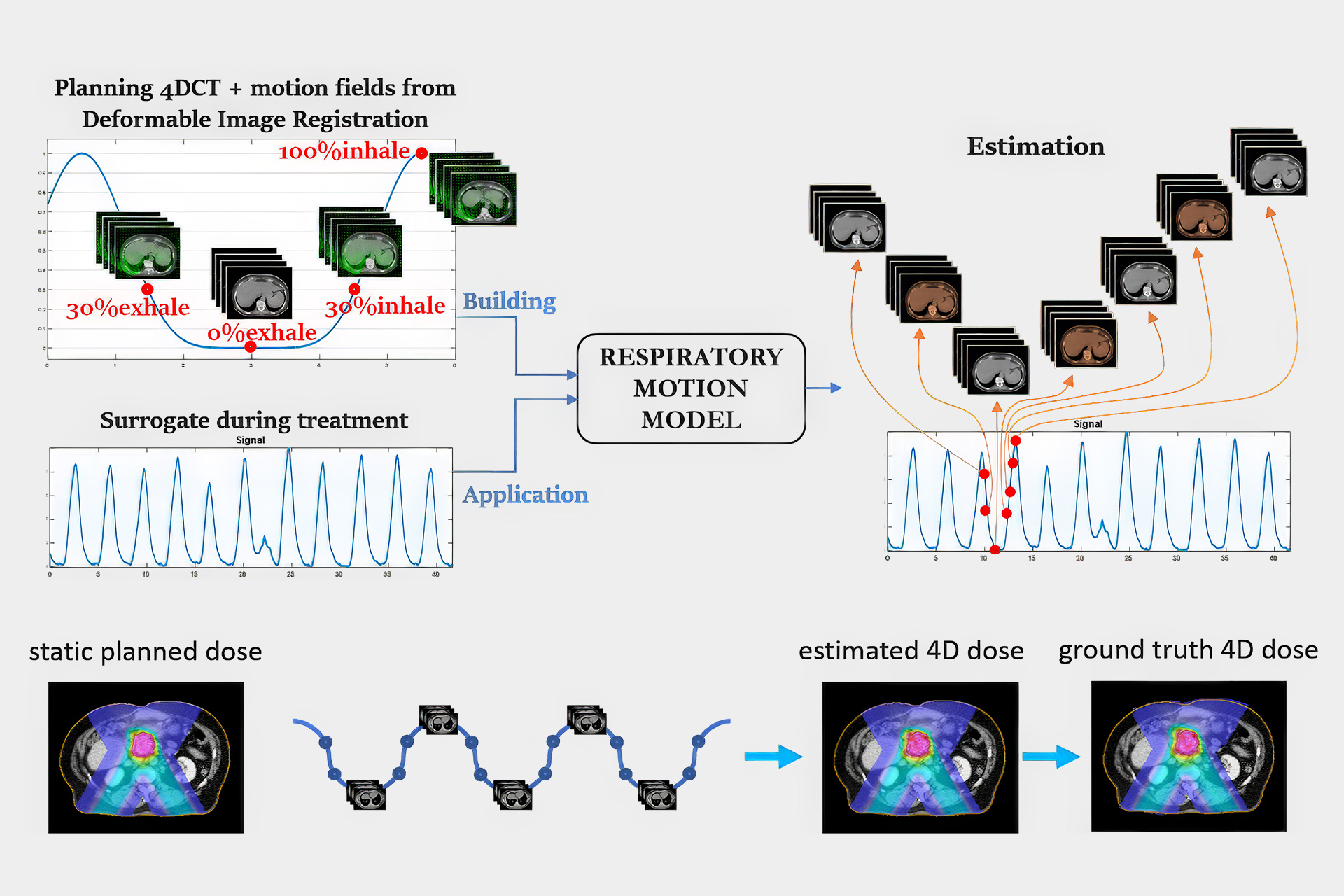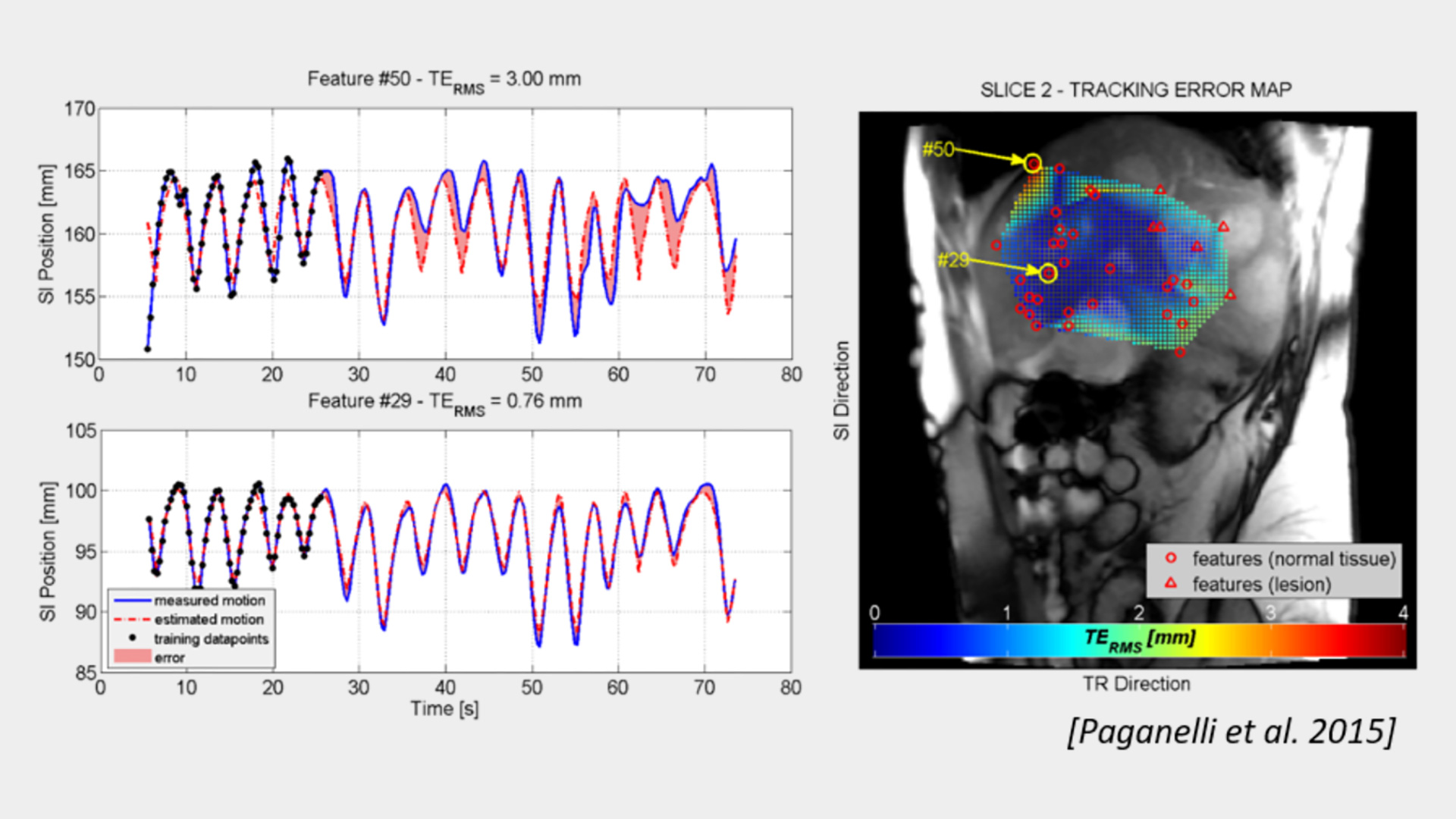4D imaging and motion modelling
- Use of respiratory-correlated 4D imaging (3D + time) for organ motion quantification during treatment planning, such as 4D Computed Tomography (4DCT) and 4D Magnetic Resonance Imaging (4D MRI)
- Implementation of methods for artifacts reduction in 4D imaging, based on external/internal, single/multiple points respiratory signals
- Implementation of motion modelling techniques to estimate geometric and dosimetric changes in presence of respiratory motion. These consist in advanced local and global motion models for tumor tracking and treatment verification and adapation.
- Exploitation of non-rigid image registration algorithm for motion quantification, with a specific focus on validation strategies

MRI-guidance


